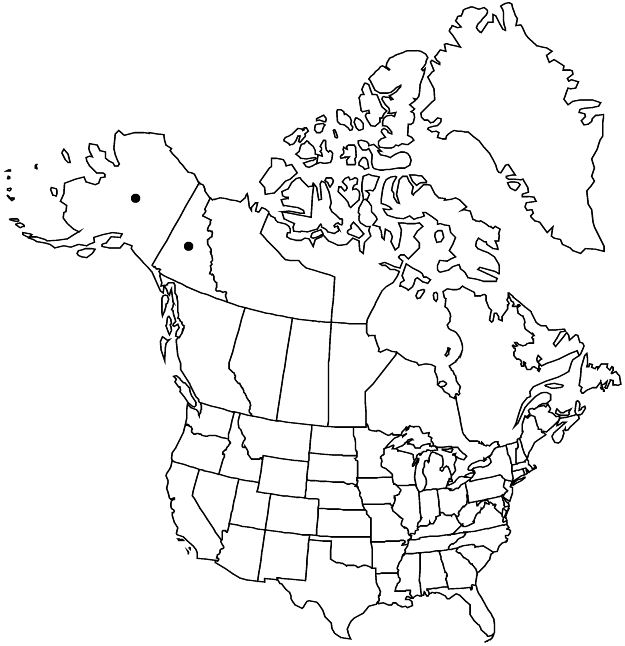Dryas alaskensis
Canad. Field-Naturalist 61: 187, plate 1, figs. 3 – 5. 1948.
Plants 2–18 cm. Leaf blades obovate or oblong-elliptic to narrowly oblong, 4.5–39 × 2–19 mm, base usually cuneate, sometimes truncate or cordate, margins coarsely dentate to crenate, sinuses 45–60% to midvein, apex rounded to obtuse, surfaces smooth to rugose, plicate, midvein and lateral veins adaxially sunken into folds, abaxial sparsely hairy to tomentose, adaxial usually glabrous, sometimes sparsely hairy proximally on midvein, feathery hairs and stipitate glands absent. Peduncles 25–130 mm. Flowers erect at flowering; sepals lanceolate to narrowly elliptic, 5.5–9 × 1.5–2 mm; petals 8, spreading, usually white or cream, sometimes yellow, 9–14 × 5–11 mm; filaments glabrous. Achenes 2–3 mm; styles 12–27 mm. 2n = 18.
Phenology: Flowering Jun–Aug.
Habitat: Solifluction soil, sand-gravel beaches, sandy lakeshores, old beach ridges, wet meadows, stream banks, dry rocky knolls, rocky heath, ericaceous tundra
Elevation: 100–1800 m
Distribution

Yukon, Alaska, e Asia (Russian Far East: Chukotka).
Discussion
Dryas punctata Juzepczuk has been reported from North America as a synonym of D. octopetala var. octopetala (E. Hultén 1968); it is now considered to be confined to northeastern Europe and northern Asia (R. Elven et al., http://nhm2.uio.no/paf/). Hultén (1959b) reduced D. octopetala var. glabrata to the rank of forma and later to synonymy under D. alaskensis (Hultén 1968).
Selected References
None.